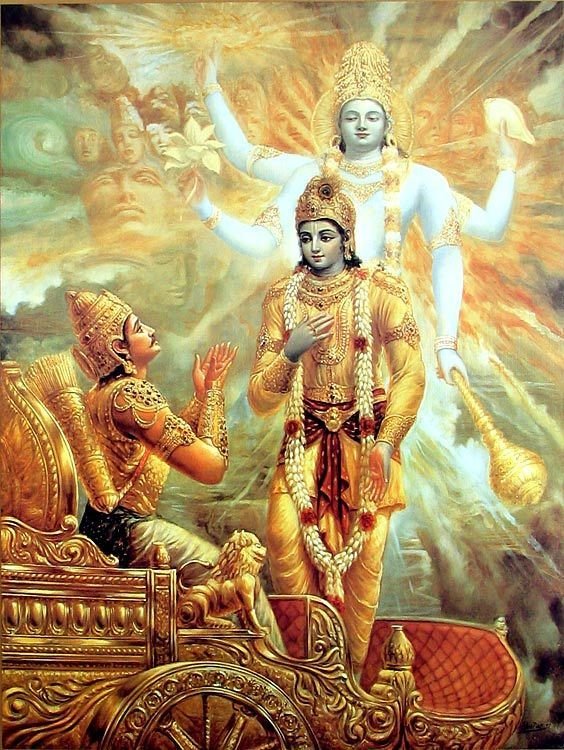Who Am I ?

Some Life Questions Ask in your Mind ?
1. What is Purpose Of My Life ?
2. Have I Satisfied in My Life ?
3. Why People don’t Understand Me ?
4. Why am I Feel alone and Prostate in My Life ?
5. How to Solve My Life Problems ?
6. Why Am I Confuse about My Life ?
7. Where will be find Peaceful Life ?
8. Who Am I ?
9. What is my Original Identity ?
"Your all Life Problems solve only from The Secret Book of Bhagwad Geeta"
Concept of Who Am I ?
The concept of “Who am I?” delves into the nature of personal identity and self-awareness. It is a profound philosophical and existential question that humans have contemplated for centuries. Different philosophical and spiritual traditions offer varying perspectives on this question. Here are a few perspectives on the concept of “Who am I?”
1. Egoic Identity: From a conventional standpoint, “Who am I?” often refers to one’s egoic identity—the collection of characteristics, roles, and social identities that define an individual in relation to others. This includes factors such as name, profession, relationships, personality traits, and experiences. However, this understanding of self is considered temporary and transient in many spiritual and philosophical traditions.
2. Essential Self: Some spiritual and philosophical perspectives propose that beyond the transient egoic identity, there is an essential self or true nature that transcends individual characteristics and roles. This essential self is often described as pure consciousness, awareness, or the soul. It is considered eternal, unchanging, and interconnected with the universal or divine consciousness.
3. Self as Awareness: Another perspective suggests that at the core of our being, we are not our thoughts, emotions, or physical bodies, but rather the awareness in which these experiences arise. This understanding views the true self as the witnessing presence that remains constant amidst the ever-changing contents of the mind and body.

4. Interconnectedness: Some philosophical and spiritual traditions propose that the question “Who am I?” cannot be answered solely in terms of an individual identity. Instead, it emphasizes the interconnectedness and interdependence of all beings. This perspective views the self as part of a larger whole, intimately connected to other people, living beings, and the universe.
It’s important to note that these perspectives represent different philosophical and spiritual viewpoints and may resonate differently with individuals based on their beliefs, cultural backgrounds, and personal experiences. The question “Who am I?” invites introspection, self-inquiry, and a deeper exploration of one’s identity and relationship to the world. It can be a contemplative journey that leads to greater self-understanding, personal growth, and a sense of connection with something larger than oneself.
Content of The Geeta Gyan
The “Geeta Gyan” (also known as the Bhagavad Gita) is a sacred Hindu scripture that contains profound teachings and insights on life, spirituality, and self-realization. It is typically studied and explored through various courses, classes, or study groups. While the specific structure may vary depending on the instructor or institution, here is a general outline that can be followed:
1. Introduction to the Bhagavad Gita:
– Overview of the Bhagavad Gita: its historical and cultural context, authorship, and significance.
– Understanding the structure and organization of the text, including the chapters and verses.
– Introduction to key concepts and themes explored in the Bhagavad Gita.
2. Philosophical and Spiritual Foundations:
– Exploring the philosophical concepts and schools of thought relevant to the Bhagavad Gita, such as Vedanta, Yoga, and Karma.
– Understanding the nature of the self (Atman) and the ultimate reality (Brahman).
– Introduction to the paths of yoga and the different approaches to spiritual realization.
3. Key Teachings and Concepts:
– In-depth study of selected chapters or verses from the Bhagavad Gita.
– Analysis and interpretation of key teachings, including concepts like Dharma, Karma Yoga, Jnana Yoga, Bhakti Yoga, and others.
– Exploring the dialogue between Lord Krishna and Arjuna and its significance in understanding the teachings.
4. Practical Applications:
– Applying the teachings of the Bhagavad Gita to everyday life and personal growth.
– Exploring how the teachings can guide decision-making, relationships, and ethical conduct.
– Integrating spiritual principles into various aspects of life, including work, family, and society.
5. Comparative Studies:
– Comparative analysis of the Bhagavad Gita with other philosophical or religious texts.
– Exploring common themes and teachings found in other spiritual traditions.
– Understanding the universal principles and insights conveyed in the Bhagavad Gita.
6. Meditation and Contemplation:
– Incorporating meditation and contemplative practices to deepen understanding and experience the teachings on a personal level.
– Exploring specific meditation techniques and mindfulness practices that align with the teachings of the Bhagavad Gita.
7. Discussion and Reflection:
– Facilitating group discussions and dialogues to share insights, reflections, and personal experiences related to the teachings.
– Encouraging participants to ask questions, seek clarification, and engage in critical thinking.
8. Integration and Continued Study:
– Discussing ways to integrate the wisdom of the Bhagavad Gita into daily life beyond the course.
– Providing resources for further study, including recommended readings, online resources, and spiritual communities.
It’s important to note that the above structure is a general framework, and the depth and emphasis on specific topics may vary depending on the course duration, the instructor’s approach, and the needs of the participants. The study of the Bhagavad Gita is a profound and lifelong journey, and different courses or classes may focus on different aspects based on their specific objectives and audience.
